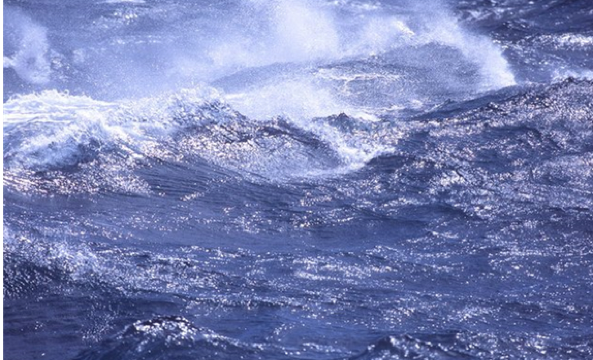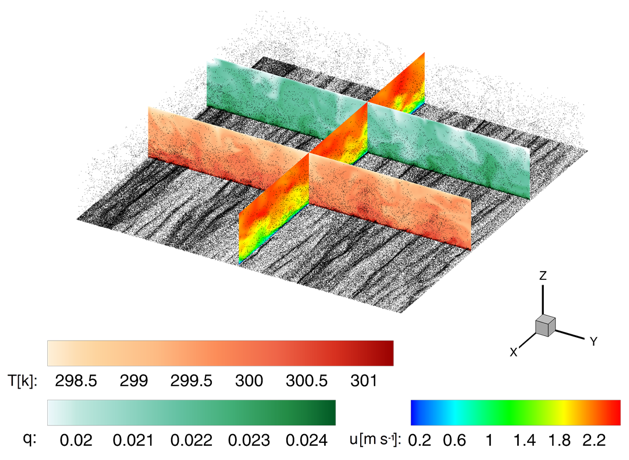


Description
Sea-spray droplets ejected into the air-sea boundary layer (ABL) take part in a series of complex transport processes, including the transfer of mass, momentum, energy, and humidity. While large-scale atmospheric motions are relatively easier to capture, details of feedback from spray droplets with the turbulence in the ABL remain obscured. This project aims at using high-resolution numerical simulations to understand the fundamental microphysics of spray droplets in the ABL. Direct numerical simulations (DNS) of turbulent air flows are laden with droplets to reveal the dynamic and thermodynamic characteristics of evaporating sea spray. We focus on statistics in a per-droplet view as well as the overall influence on the turbulent heat and moisture fluxes. With the insights obtained from the simulations, we are developing a connection between the ideal high-resolution simulations and the commonly used larger-scale models, which would help us better understand how best to parameterize the roles of sea-spray droplets.
- Peng, T. & D.H. Richter (2020), Influences of polydisperse sea spray size distributions on model predictions of air-sea heat fluxes, Journal of Geophysical Research: Atmospheres, 125, e2019JD032326
- Peng, T. & D.H. Richter (2019), Sea spray and its feedback effects: Assessing bulk algorithms of air-sea heat fluxes via direct numerical simulations, Journal of Physical Oceanography, 49, 1403-1421
- Peng, T. & D.H. Richter (2017), Influence of evaporating droplets in the turbulent marine atmospheric boundary layer, Boundary-layer Meteorology, 165(3), 497-518
For more information:
Project Aims
- Quantify the influences of evaporative of droplets on the turbulent ABL
- Modify and develop parameterizations of spray fluxes
- Discover the nature of thermodynamic feedback between spray and turbulence